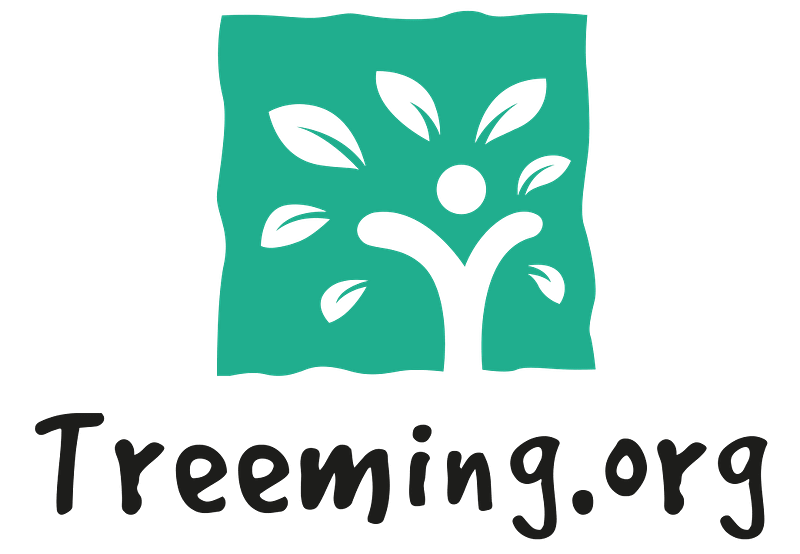Mindfulness in nature, especially through practices like Shinrin-yoku, offers a special way to connect with the environment. This article explores how spending time in forests can improve our health and well-being. We will look at techniques for enjoying nature fully, the best places to practice forest bathing, and personal stories from those who have experienced its benefits.
Key Takeaways
- Shinrin-yoku, or forest bathing, helps reduce stress and improve mood.
- Spending time in nature can lead to better mental and physical health.
- Choosing the right forest and preparing properly enhances the experience.
- Engaging all your senses while in the forest deepens your connection to nature.
- Practicing mindfulness in daily life can help maintain the calmness gained from forest visits.
Understanding Shinrin-yoku and Its Benefits
Origins of Shinrin-yoku
Shinrin-yoku, or forest bathing, started in Japan during the 1980s. It was created as a way to help people relax and connect with nature. The idea is simple: spend time in the forest to improve your health and well-being. This practice encourages people to slow down and enjoy the beauty of the natural world around them.
Health Benefits of Forest Bathing
Forest bathing has many health benefits. Here are some key points:
- Reduces stress: Spending time in nature can lower stress levels.
- Boosts mood: Being in the forest can make you feel happier and more relaxed.
- Improves focus: Nature helps clear your mind, making it easier to concentrate.
Scientific Studies Supporting Shinrin-yoku
Research shows that forest bathing is good for you. Here are some findings:
| Study | Findings |
|---|---|
| Study 1 | Decreased cortisol levels in participants after forest exposure |
| Study 2 | Improved mood and reduced anxiety in individuals who practiced Shinrin-yoku |
| Study 3 | Enhanced immune function linked to time spent in nature |
Spending time in nature is not just a nice idea; it has real benefits for our health and happiness. Grounding in forest bathing helps center awareness on the physical sensations in the body, while forest bathing promotes mindfulness and awareness of the environment. Together, they create a powerful experience for well-being.
Preparing for a Mindful Forest Experience
Choosing the Right Forest
When planning your forest visit, it’s important to select a location that resonates with you. Consider factors like:
- Accessibility: How easy is it to get there?
- Size: Larger forests offer more space to explore.
- Environment: Look for forests with diverse plants and wildlife.
Essential Gear for Forest Bathing
To make the most of your experience, pack the right items. Here’s a quick list of essentials:
- Comfortable clothing suitable for the weather.
- A water bottle to stay hydrated.
- A journal for jotting down thoughts and feelings.
- Snacks for energy during your exploration.
Setting Intentions for Your Visit
Before you head into the forest, take a moment to set your intentions. This can help you focus and deepen your experience. Think about:
- What do you hope to gain from this time in nature?
- How can you disconnect from technology and be present?
- What feelings or thoughts do you want to explore?
Taking time to prepare can enhance your connection with nature. Remember, the goal is to slow down and truly engage with your surroundings.
By following these steps, you can create a meaningful and mindful experience in the forest. Enjoy your journey!
Techniques for Deepening Your Forest Connection
Mindful Breathing Exercises
Mindful breathing is a simple yet powerful way to connect with the forest. Here are some steps to practice it:
- Find a quiet spot in the forest where you feel comfortable.
- Close your eyes and take a deep breath in through your nose, feeling your chest expand.
- Hold your breath for a moment, then slowly exhale through your mouth.
- Repeat this process for several minutes, focusing on the sounds of nature around you.
Engaging the Senses in Nature
To deepen your connection with the forest, engage all your senses:
- Sight: Observe the colors and shapes of leaves, trees, and wildlife.
- Sound: Listen to the rustling leaves, birds singing, and the wind blowing.
- Touch: Feel the texture of tree bark, leaves, and the ground beneath your feet.
- Smell: Breathe in the fresh scent of pine, earth, and flowers.
- Taste: If safe, try some edible plants or berries to connect with nature’s flavors.
Practicing Gratitude in the Forest
Taking a moment to express gratitude can enhance your experience:
- Reflect on what you appreciate about nature.
- Consider how the forest contributes to your well-being.
- Write down your thoughts in a journal or share them with a friend.
Nature’s pathways to mindfulness can help restore our physical and mental balance. Spending time in the forest allows us to reconnect with ourselves and the world around us.
By using these techniques, you can create a deeper bond with the forest and enjoy the many benefits it offers.
Exploring the Best Forests for Shinrin-yoku
When it comes to forest bathing, some places stand out for their beauty and tranquility. Here are some of the best forests around the world where you can connect deeply with nature:
Top Forests in North America
- Redwood National Park, California
- Home to the tallest trees on Earth.
- Offers peaceful trails surrounded by ancient redwoods.
- Great Smoky Mountains, Tennessee/North Carolina
- Known for its rich biodiversity and stunning views.
- Perfect for hiking and enjoying the fresh mountain air.
- Olympic National Park, Washington
- Features lush rainforests and beautiful coastlines.
- A great place for wildlife watching and quiet reflection.
Hidden Gems in Europe
- Black Forest, Germany
- Famous for its dense woods and charming villages.
- Ideal for long walks and enjoying local culture.
- Finland’s Taiga Forests
- Offers a unique experience with its vast, untouched nature.
- Great for spotting wildlife like bears and moose.
Asia’s Most Serene Forests
- Yakushima Island, Japan
- Known for its ancient cedar trees and rich biodiversity.
- A perfect spot for relaxation and enjoying nature’s beauty.
- Nanjing’s Purple Mountain, China
- Offers beautiful trails and historical sites.
- A peaceful escape from the busy city life.
Exploring these forests can help you feel more connected to nature and yourself. Forest bathing is not just about being in nature; it’s about truly experiencing it with all your senses.
Whether you choose a well-known park or a hidden gem, each forest offers a unique opportunity for mindfulness and relaxation.
Integrating Mindfulness Practices into Daily Life
Creating a Home Meditation Space
Creating a peaceful spot in your home can help you practice mindfulness regularly. Here are some tips to set up your space:
- Choose a quiet area where you won’t be disturbed.
- Add comfortable seating like a cushion or chair.
- Use calming colors and natural elements like plants or stones.
Daily Mindfulness Routines
Incorporating mindfulness into your daily life can be simple. Here are some easy ways to do it:
- Start your day with a few minutes of deep breathing.
- Take short breaks during your day to check in with your feelings.
- Before bed, reflect on your day and what you are grateful for.
Connecting with Nature in Urban Settings
Even in a busy city, you can find ways to connect with nature. Consider these ideas:
- Visit local parks or gardens.
- Take a walk and pay attention to the trees and flowers.
- Bring nature indoors with houseplants.
Mindfulness is about being present. It helps you notice the little things in life that often go unnoticed.
By integrating these practices into your daily routine, you can enhance your connection to nature and improve your overall well-being. Remember, even small steps can lead to big changes!
Stories from Experienced Forest Bathers
Personal Transformations Through Shinrin-yoku
Many people have shared their journeys with forest bathing and how it has changed their lives. Here are some common themes:
- Improved mental health: Many individuals report feeling less anxious and more at peace after spending time in nature.
- Physical benefits: Regular forest visits can lead to better sleep and increased energy levels.
- Connection to nature: People often feel a deeper bond with the environment, leading to a greater appreciation for the world around them.
Lessons Learned from Nature
Nature teaches us valuable lessons. Here are a few insights from experienced forest bathers:
- Patience: Nature moves at its own pace, reminding us to slow down.
- Mindfulness: Being present in the moment helps us appreciate the little things.
- Resilience: Just like trees weather storms, we can learn to overcome challenges.
Community Experiences and Testimonials
Many have found support in community groups focused on forest bathing. Here are some shared experiences:
- Group hikes: Participants often feel more connected when sharing the experience with others.
- Workshops: Learning together can deepen understanding and appreciation of nature.
- Shared stories: Hearing others’ journeys can inspire and motivate individuals to continue their own practice.
"Since I started practicing nature mindfulness and forest bathing regularly, I have seen a noticeable improvement in both my mental and physical health." This statement reflects the profound impact that spending time in nature can have on our overall well-being.
Conclusion
In closing, connecting with nature through mindfulness can bring us peace and happiness. By taking time to be present in the forest, we can feel more relaxed and aware of our surroundings. Simple practices like deep breathing, listening to the sounds of the trees, or feeling the ground beneath our feet can help us feel grounded. Remember, spending time in nature is not just good for our minds but also for our hearts. So, the next time you find yourself in a forest, take a moment to breathe deeply and enjoy the beauty around you.
Frequently Asked Questions
What is Shinrin-yoku?
Shinrin-yoku, also known as forest bathing, is a Japanese practice that encourages spending time in nature and soaking in the sights, sounds, and smells of the forest. It helps people feel calm and connected to the natural world.
How can forest bathing improve my health?
Being in the forest can lower stress, boost your mood, and even help your immune system. It’s a great way to relax and feel better both mentally and physically.
Do I need special gear for forest bathing?
No special gear is needed! Just wear comfortable clothes and shoes for walking. It’s also good to bring water and maybe a journal to write down your thoughts.
Can I practice mindfulness in my backyard?
Absolutely! You don’t have to go deep into the woods. You can practice mindfulness in your backyard or any green space nearby. Just focus on the nature around you.
How long should I spend forest bathing?
Even a short visit of 20-30 minutes can be beneficial. The key is to be present and really notice what’s around you.
Are there any specific techniques for forest bathing?
Yes! Some techniques include deep breathing, paying attention to the sounds of the forest, and taking time to appreciate the beauty around you.







